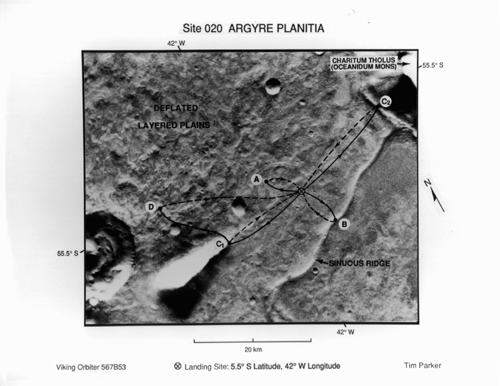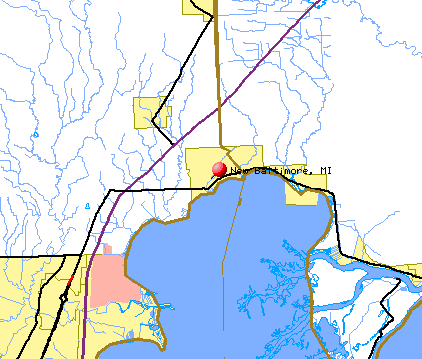

Our group consist of three members, Eric Pena, Kendell Smith, and Anthony Ramirez. Eric Pena, who is a computer scientist, represents the scientific field. Kendell, a teacher, represents the civil services. Anthony, who is a mechanical engineer, represents the engineering field. This way we have a person in each basic field. Our goal is to have each other knowledgeable in each other job and know as much as possible about his particular field. By doing this we can integrate each other knowledge in the colonization process, and in developing and maintaining a community. Anthony’s mechanical engineering can be utilized in designing the community, designing the launch pads, maintaining the communication with Earth, bringing the people, and bringing the materials necessary for building the community. Eric’s scientific knowledge can be used to design the sewer system, to design the community, to calculate the launch opportunities, to design a system that can make Mars a hospitable environment, to see which is the best way to communicate with Earth, to select the landing site, and to made Mars breathable. Kendell, as a person representing the civil services, can select the people going to Mars, he can study the social development of the people, he can help in selecting the best landing site, and he also can decide the best political system for our community. As we can see, every field relates to each other.
We think that people from every
country should have the opportunity to go and live in Mars. Every person
should be healthy and free from any disease so that Mars can be free of
harmful diseases. "We cannot risk infecting the crew with such peril that
could easily kill them*" in an environment such as Mars. These
people should have knowledge in any of the three basic fields: science,
engineering, and/or civil services. By following the above criteria, our
community could become a utopian city. We chose to send 10,000 people to
Mars since we only have a 20 square mile plot of land. We think that 33
percent should be scientists, 33 percent should be engineers, and 33 percent
should be in civil services so that everybody can help on developing and
maintaining the community. The engineers would have the same responsibilities
that Anthony has. The scientist would have the same responsibilities that
Eric has, and the civil services people would have the responsibilities
that Kendell has.

We decided to land on a site called Argyre Plantia which longitude is 55.5 degrees South and its latitude is 42 degrees West. Its elevation is of 1 kilometer. This site is one of the largest and best-preserved ancient impact basins. Argyre is surrounded by rugged massifs. It is like a huge crater. This would help us to set our dome. It may have drained a lake within the basin. The site is surrounded by rugged massifs which could protect us from dust storms.
Our city is based on a cosmic,
a organic, and a practical
model. Our city will be a combination of the three models. We
chose a cosmic model so that all the streets lead to downtown where the
main buildings will be. These buildings include the City Hall, the court,
and the church, for example. We are also basing our city on a practical
model since it will be easy to use and easy to organize. Based on this
model our city will be divided on different zones, for example, there will
be an industrial zone, a zone for business, and a residential zone.

We chose Baltimore, MD, as the city in which we are basing our utopian city since Baltimore is a city that fit our needs. There is only one thing that we have to change, crime. Baltimore has an average of crime higher than the national average. On our community we will no tolerate crime. It think that every person that commits crime should be brought back to Earth.
The colonists would live in regular houses which will be in a big dome underground. The dome would be made of high-strength plastics such as Kevlar, a plastic twice as strong as steel. Kevlar fabric is unlikely to fail catastrophically. We could bury half of a spherical dome on a crater. We could live on the buried half, storing our food on the lower part. The upper half would be used for agriculture.
The people would communicate with each other as they would communicate on Earth. The best way for us to communicate with Earth would be by using a two-way coherent satellite systems since we could send and receive messages from Earth.
These are some ways that we are going to use to communicate within the community:
To produce heat we would need hydrogen (H), carbon (C), and oxygen (O). Hydrogen can be imported from Earth. Carbon and oxygen are two elements in the Martian atmosphere. They can be acquired easily. We can filter carbon dioxide by condensing it into a liquid state and then removing other gases. Then we can vaporize off the holding tanks of carbon dioxide. Thus, it will be distilled 100 percent pure. Now that we have the three elements, we can make a reaction with oxygen, carbon dioxide, and hydrogen by using a reaction called the methanation reaction. This reaction is also called the Sabatier reaction, which produces methane and water from carbon dioxide and hydrogen. This is written:
CO2+4H2® CH4+2H2O
This reaction releases heat. Because of this, it is exothermic, and no energy is required to do it. This reaction would give us not only heat, but also water.
Other way of warming Mars is by using orbiting mirrors which could be capable of warming the surface of Mars to terrestrial temperatures.
Another way is by setting up factories that produce the strongest greenhouse gases known to us, the halocarbons. We could use a gas called perfluoromethane, CF4. This would require several hundreds billions dollars.
The best way to "turn up the
heat" is by using biological assistants,
bacteria. Bacteria can metabolize nitrogen and water to produce ammonia.
Nitrogen can be found on Mars on nitrate beds. Bacterial ecology can synthesize
water and carbon dioxide into methane. Ammonia and methane would shield
Mars’ surface against solar ultraviolet radiation, too.
We could use primitive
plants to produce oxygen to allow advanced plants to propagate.
These plants, then, will perform photosystesis, producing oxygen. We would
need space mirrors to maintain the
plants. Since this method would take a very long time, we could import
fresh air into the dome at Mars.
Some important considerations
would be how are we going to get water, have fresh air, to keep the dome
warm, were to land, how to build and maintain the community, the communication,
and how to send people to Mars. These problems were already discussed,
but there are other problems. We have to consider that people will be exposed
to zero gravity. This carries the risk
of deterioration to human muscles and bone tissue. Zero gravity will cause
cardiovascular deterioration, decalcification, and demineralization of
bones. Other thing that we have to consider is the radiation
hazards. There are two ways to send people safe from radiation. One is
by using ultra-fast spacecraft, and the other is by using huge spacecraft.
Both seem impossible. We have to consider the threat
of contamination. We have to make sure to send people healthy,
free of any diseases. We have to make sure, too, that we do not bring back
to Earth anybody who may have diseases. We can not risk Earth. Other consideration
is that the Martian day is 39.6 minutes longer than the terrestrial day.
There are three alternatives for our time system. One is by stooping the
clock at midnight for 39.6 minutes. The other is by setting our own time
units. They would be decimal-based units and we would have decimal-based
clocks. The last alternative is having five weekdays of 24 terrestrial
hours and having a weekend of 59.55 terrestrial hours.
*Excerpt from The Case for Mars by Robert Zubrin.
Page 132.
Zubrin, Robert. The Case for Mars. New York, NY. The Free Press, 1996.
Ronald Greely and Peggy Thomas. Mars Landing Site Catalog. http://cmex.arc.nasa.gov/MarsTools/Mars_Cat/Mars_Cat.html. January 21, 1999.
